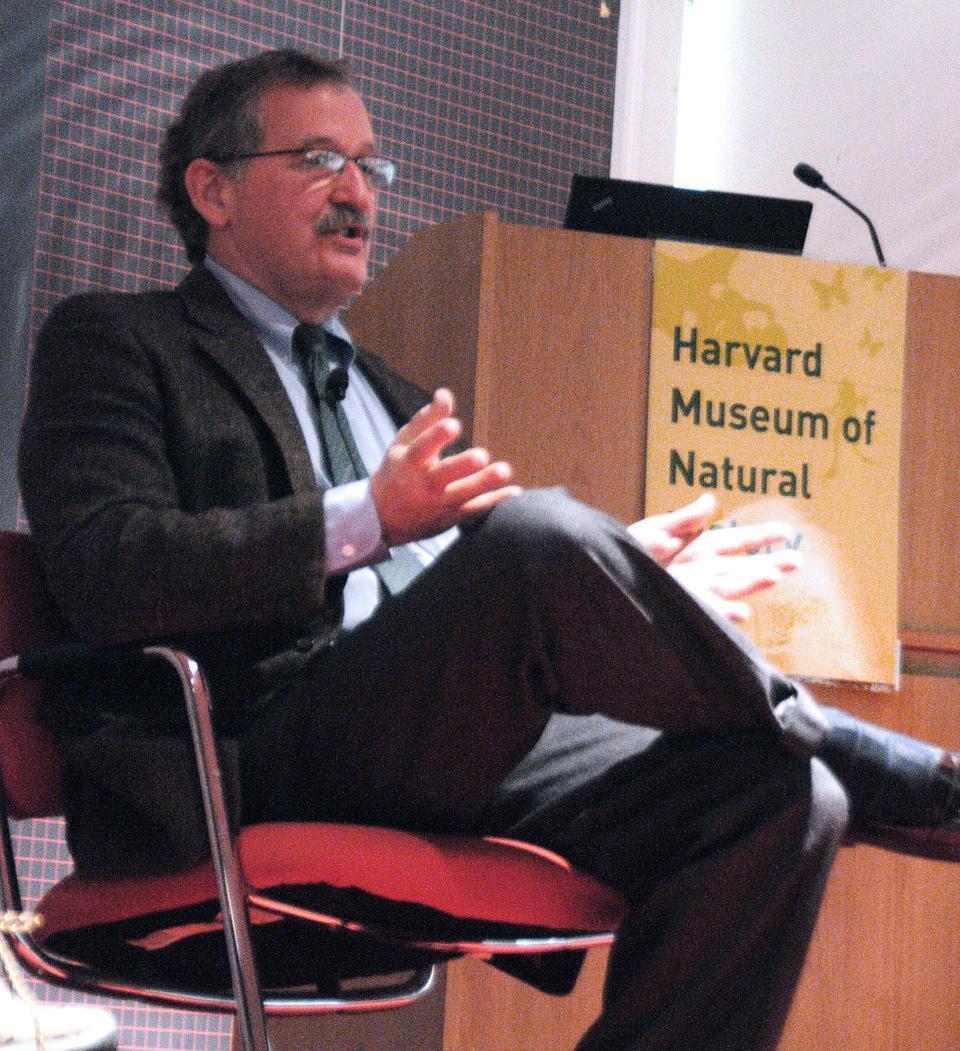
News
Summers Will Not Finish Semester of Teaching as Harvard Investigates Epstein Ties

News
Harvard College Students Report Favoring Divestment from Israel in HUA Survey

News
‘He Should Resign’: Harvard Undergrads Take Hard Line Against Summers Over Epstein Scandal

News
Harvard To Launch New Investigation Into Epstein’s Ties to Summers, Other University Affiliates

News
Harvard Students To Vote on Divestment From Israel in Inaugural HUA Election Survey
Smithsonian Curator Analyzes Origins Of Food

A few hundred people crowded inside Geological Lecture Hall yesterday to hear Smithsonian curator Bruce D. Smith chronicle the evolution in human lifestyle from hunting and gathering to agriculture.
The lecture, entitled “Where our Food Comes From: The Origins of Agriculture,” was the second installation in the three-part “Food for Thought” series sponsored by the Harvard Museum of Natural History.
Smith discussed the slow transition of earlier humans from wild to domesticated food sources, focusing on pigs, corn, squash, and sunflowers.
“How long did it take humans to transition from a hunter-gatherer lifestyle to agriculture?” Smith asked in a slide.
He answered with an analogy.
“Our ancestors were cruising along in a Volkswagen bus, taking their time,” he responded, amid chuckles from the audience.
In his hour-long lecture, Smith also spoke about topics ranging from various areas in the world that independently domesticated plants and animals to methods that archeobiologists use to determine the time period during which certain seeds were domesticated.
Smith later delved into topics such as the domestication of cats and dogs.
“Cats and dogs were never really a prey species, but [they had a] mutually beneficial relationship [with humans]. Dogs have come a lot further into [that] relationship than cats,” Smith said.
Lauren Schumacher ’10, a molecular and cellular biology concentrator earning a secondary field in archeology, said she enjoyed the lecture.
“I thought it was a really interesting overview of where [domestication] happens and how we are looking at the big questions of when it happened, how it is,” Schumacher said.
Other audience members echoed Schumacher’s sentiments.
“I liked hearing him talk about why certain animals became domesticated,” Kevin Verbael ’10 said.
Tom Scanlon, the assistant director of public programs at the Natural History Museum, attributed the high turnout of Harvard students at the event to a high public interest in food and sustainability.
“It comes right down to it: Is there going to be enough food for the world?” Scanlon asked.
Want to keep up with breaking news? Subscribe to our email newsletter.
